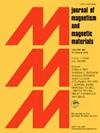Trajectory tracking control of a four-bar linkage prosthetic knee with magnetorheological damper
IF 2.5
3区 材料科学
Q3 MATERIALS SCIENCE, MULTIDISCIPLINARY
引用次数: 0
Abstract
In order to improve biomimicry, a four-bar linkage prosthetic knee with magnetorheological (MR) damper was developed in this paper. The principle and structure of four-bar linkage MR prosthetic knee was introduced and its kinetic model was established. A MR damper matching the proposed prosthetic knee was designed, fabricated and tested, and the forward and inverse mechanical model were conducted. In addition, to solve the problems of complex model, poor bionics and low trajectory tracking accuracy in the MR prosthetic knee, a PD-type iterative learning control (ILC) controller was developed. The simulated and experimental test results show that the positive maximum error of the knee joint swing trajectory based on PD-type ILC controller are 2.2°(speed of 0.5 m/s), 4.1°(speed of 1.0 m/s), and 1.9°(speed of 1.5 m/s), respectively, and the negative maximum error of that are −1.4°(speed of 0.5 m/s), −6.7°(speed of 1.0 m/s), and −5.5°(speed of 1.5 m/s), respectively, which effectively tracks the reference swing trajectory.
带磁流变阻尼器的四杆联动假肢膝关节的轨迹跟踪控制
为了提高仿生能力,本文开发了一种带有磁流变(MR)减振器的四杆联动假膝。本文介绍了四杆联动磁流变假膝的原理和结构,并建立了其动力学模型。设计、制造和测试了与假膝匹配的磁流变阻尼器,并建立了正向和反向力学模型。此外,为了解决磁共振假膝模型复杂、仿生性差、轨迹跟踪精度低等问题,还开发了一种 PD 型迭代学习控制(ILC)控制器。模拟和实验测试结果表明,基于 PD 型 ILC 控制器的膝关节摆动轨迹正向最大误差分别为 2.2°(速度为 0.5 m/s)、4.1°(速度为 1.0 m/s)和 1.9°(速度为 1.最大负误差分别为-1.4°(速度为 0.5 m/s)、-6.7°(速度为 1.0 m/s)和-5.5°(速度为 1.5 m/s),可有效跟踪参考摆动轨迹。
本文章由计算机程序翻译,如有差异,请以英文原文为准。
求助全文
约1分钟内获得全文
求助全文
来源期刊

Journal of Magnetism and Magnetic Materials
物理-材料科学:综合
CiteScore
5.30
自引率
11.10%
发文量
1149
审稿时长
59 days
期刊介绍:
The Journal of Magnetism and Magnetic Materials provides an important forum for the disclosure and discussion of original contributions covering the whole spectrum of topics, from basic magnetism to the technology and applications of magnetic materials. The journal encourages greater interaction between the basic and applied sub-disciplines of magnetism with comprehensive review articles, in addition to full-length contributions. In addition, other categories of contributions are welcome, including Critical Focused issues, Current Perspectives and Outreach to the General Public.
Main Categories:
Full-length articles:
Technically original research documents that report results of value to the communities that comprise the journal audience. The link between chemical, structural and microstructural properties on the one hand and magnetic properties on the other hand are encouraged.
In addition to general topics covering all areas of magnetism and magnetic materials, the full-length articles also include three sub-sections, focusing on Nanomagnetism, Spintronics and Applications.
The sub-section on Nanomagnetism contains articles on magnetic nanoparticles, nanowires, thin films, 2D materials and other nanoscale magnetic materials and their applications.
The sub-section on Spintronics contains articles on magnetoresistance, magnetoimpedance, magneto-optical phenomena, Micro-Electro-Mechanical Systems (MEMS), and other topics related to spin current control and magneto-transport phenomena. The sub-section on Applications display papers that focus on applications of magnetic materials. The applications need to show a connection to magnetism.
Review articles:
Review articles organize, clarify, and summarize existing major works in the areas covered by the Journal and provide comprehensive citations to the full spectrum of relevant literature.
 求助内容:
求助内容: 应助结果提醒方式:
应助结果提醒方式:


